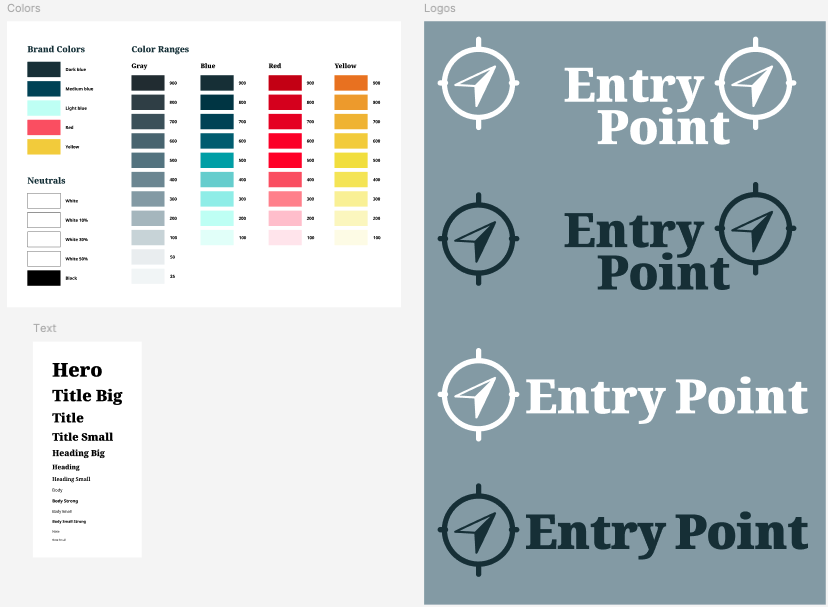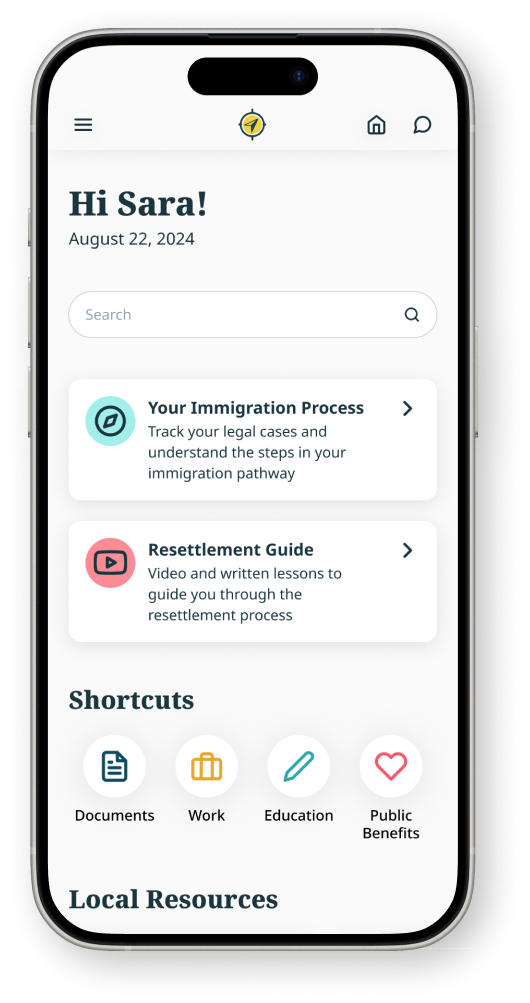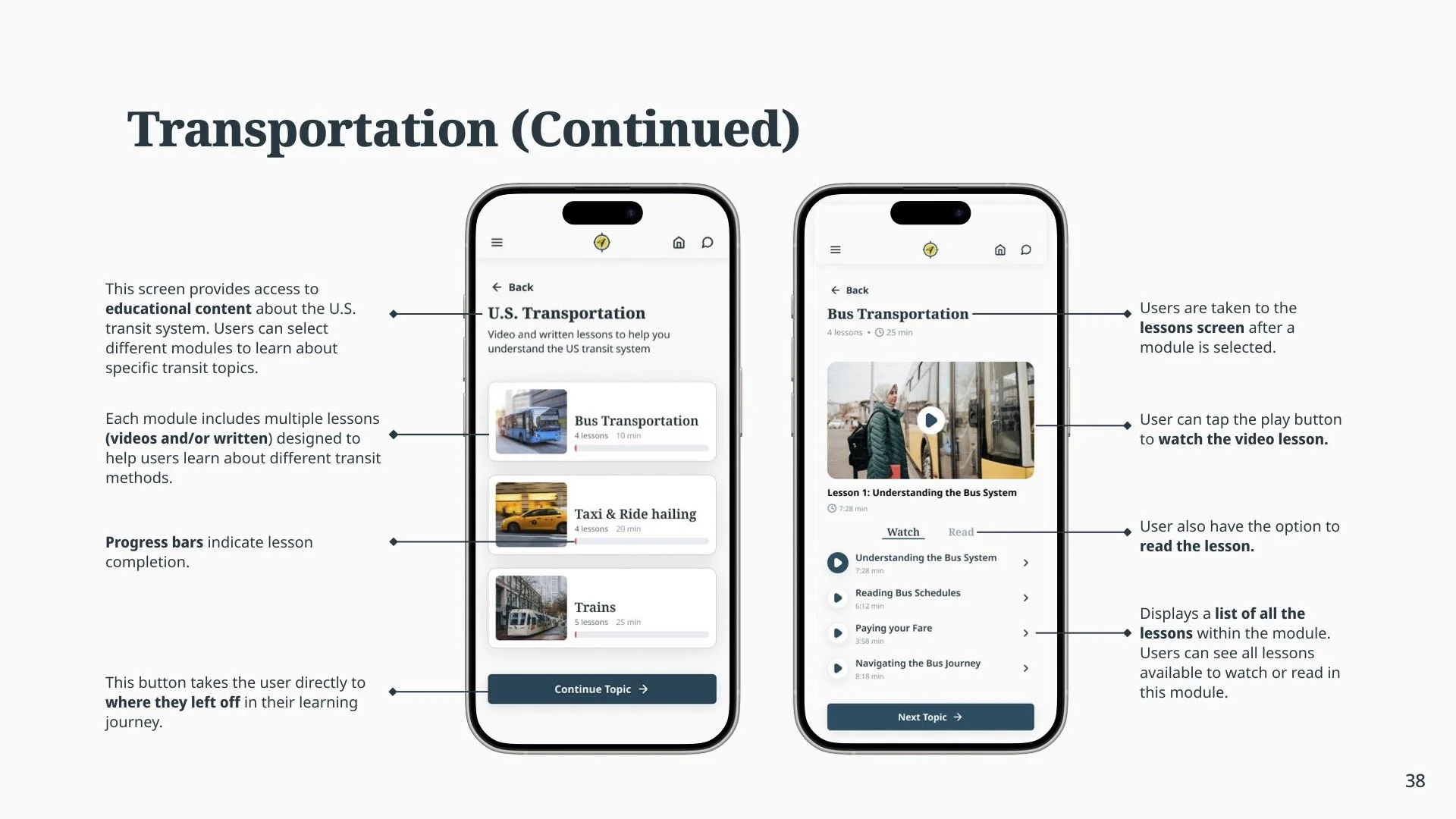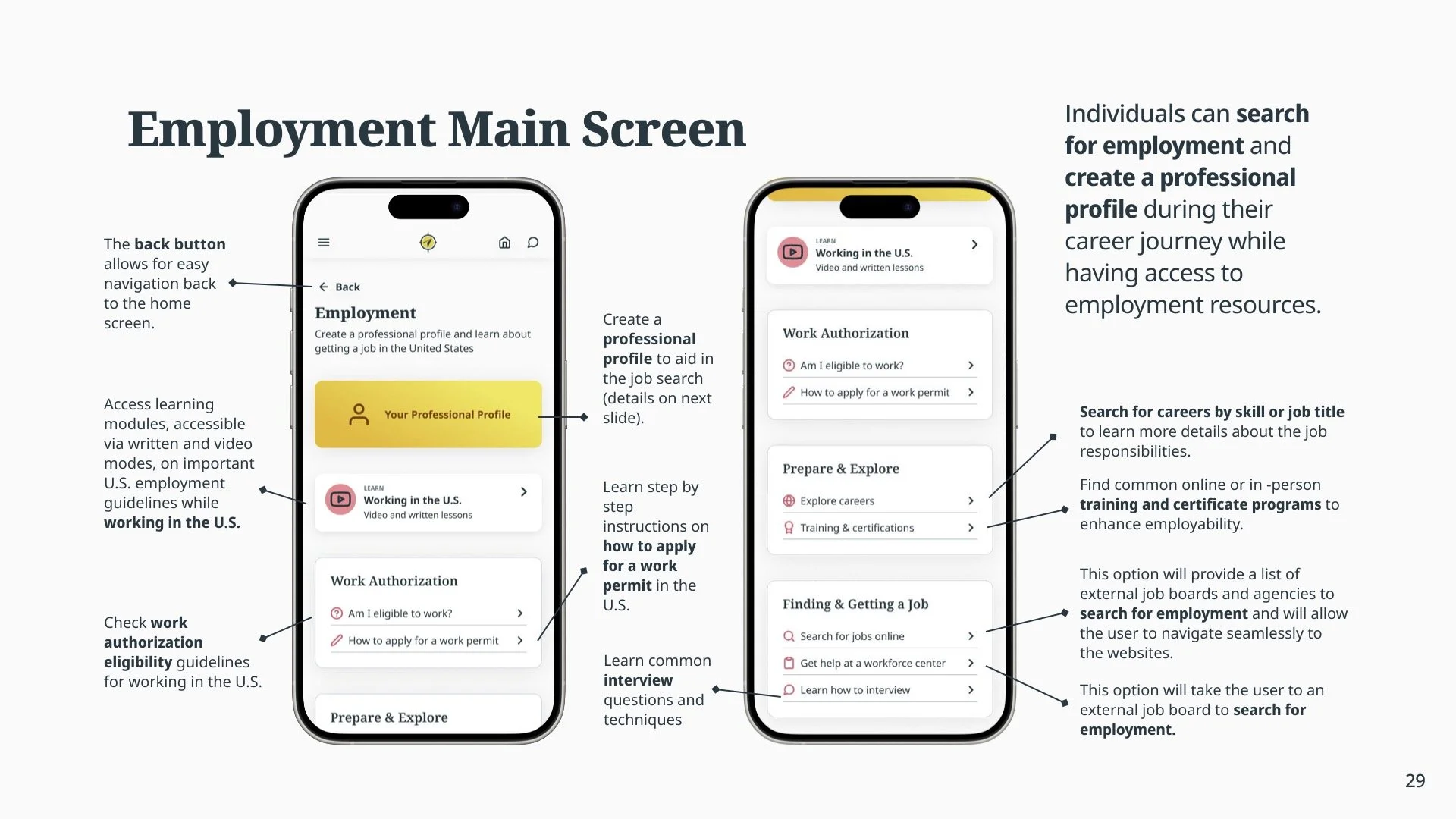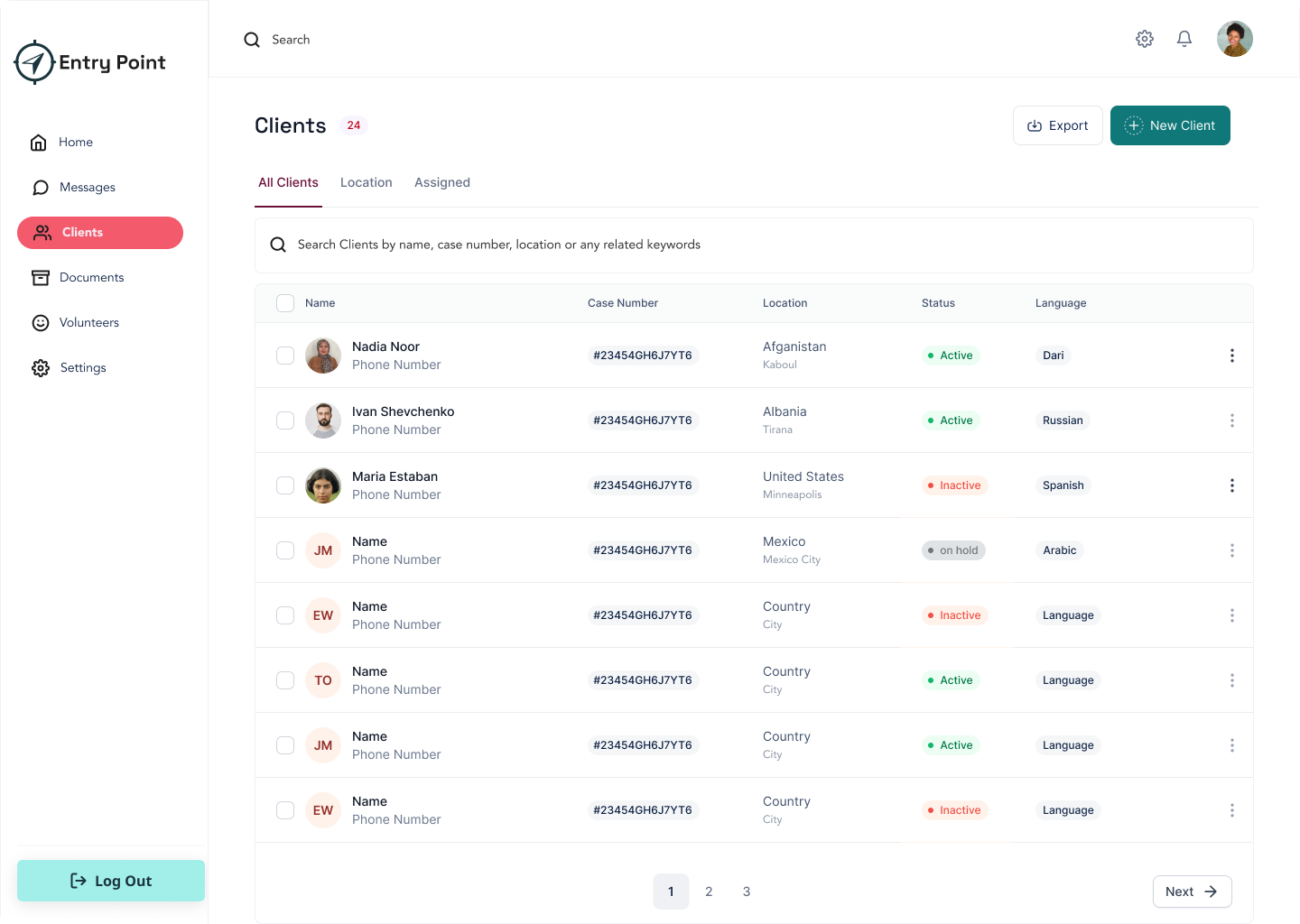Entry Point
Simplifying the Resettlement Process for Refugees & Immigrants
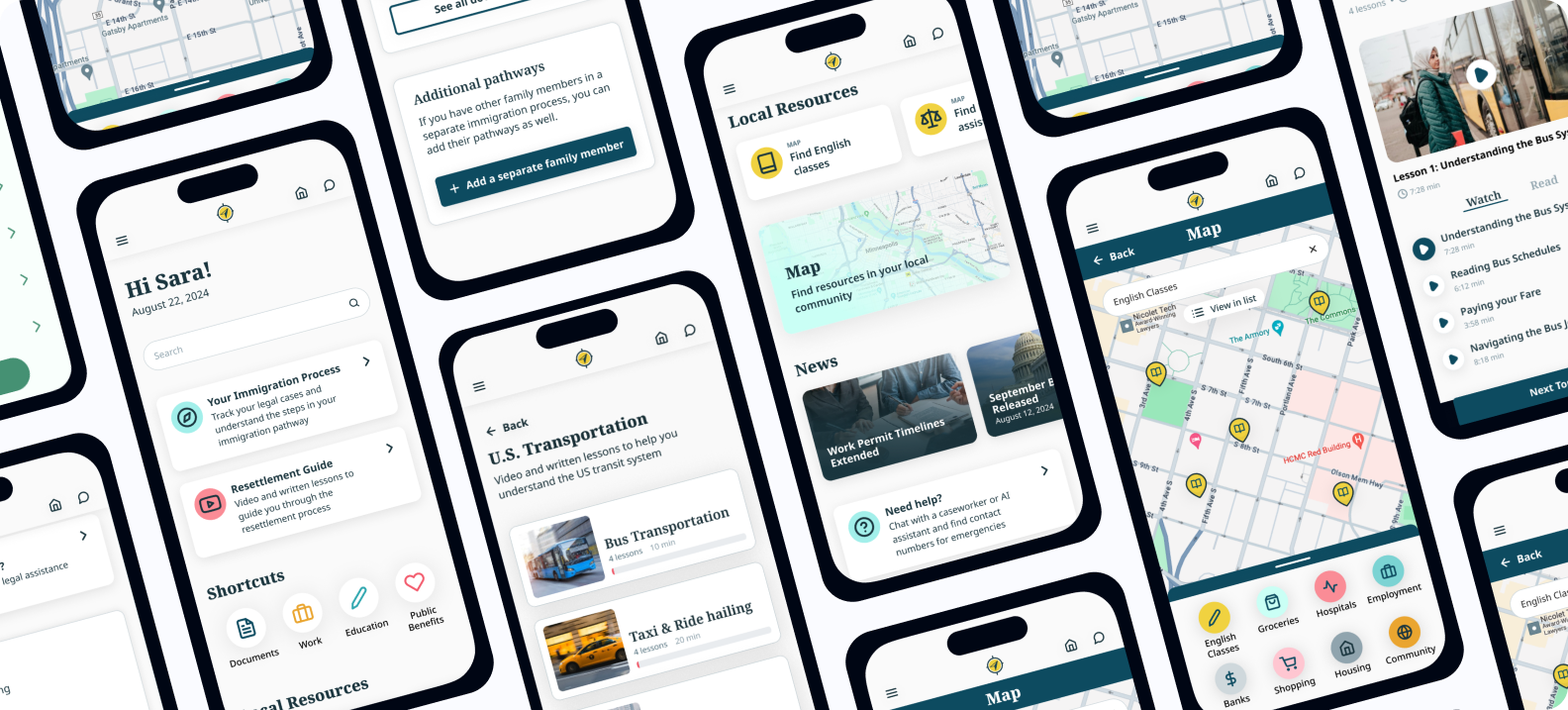
Team:
Cassie
Nancy
Emma
Methods:
User Interviews
Usability Testing
Secondary Research
Competitive Analysis
Key Deliverables:
Annotated Wireframe
Research Report
Interactive Prototype
Information Architecture
Introduction
Entry Point is an app designed to address the complex challenges faced by refugees and immigrants during the resettlement process in the United States. Our team collaborated with a humanitarian expert to create a tool that provides clear guidance on legal immigration pathways, access to community resources, and essential support for integrating into a new environment. This project was driven by the goal of simplifying the resettlement process and empowering users to navigate their new lives with confidence.
The Problem
Refugees and immigrants face significant challenges during the resettlement process, including navigating complex legal pathways, managing extensive documentation, and accessing essential resources like employment, healthcare, and education. Despite receiving a lot of information, many refugees, struggle with understanding and applying it in their daily lives. This often leads to confusion, stress, and delays in successfully settling into their new communities. However, the Entry Point app hopes to help address these challenges by providing clear, actionable resources and support.
Research & Insights
User Research:
Our research began with interviews and surveys conducted with refugees and individuals working in resettlement agencies. We also analyzed existing tools designed to support the resettlement process to identify gaps and opportunities for improvement. Through this research, we discovered that refugees face barriers such as language difficulties, lack of knowledge about local resources, and confusion about legal processes.
Existing Tools:
We reviewed tools that provide legal pathway information, cultural orientation, translation services, resource finding, and AI assistance. This helped inform the features and design of Entry Point, ensuring that it addressed gaps in current offerings.
Key Insights:
Information Overload: Refugees receive a vast amount of information but often struggle to understand and use it effectively in their daily lives.
Navigation Challenges: Many refugees are unfamiliar with various US systems and how to access essential services like healthcare, employment, and education.
Document Management Issues: Managing and keeping track of important documents is a significant pain point, leading to stress and delays in accessing services.
These insights were critical in shaping the features of the Entry Point app, ensuring that it directly addresses the most pressing needs of its users.
IA Diagram
Information Architecture Overview:
To ensure that the Entry Point app was both intuitive and easy to navigate, we developed an Information Architecture (IA) diagram. This diagram served as a blueprint for the app's structure, helping us to organize content in a way that aligns with the users’ mental models and needs.
Purpose and Design Considerations
The IA diagram was critical in mapping out the user journey, from the onboarding process through to accessing specific resources, such as the Resettlement Guide, document management tools, and local services. By visualizing the relationships between different sections of the app, we ensured that users could easily find what they were looking for without unnecessary complexity.
Personas
To ensure that Entry Point effectively addressed the needs of its users, we developed detailed personas based on our research findings. These personas guided our design decisions and kept the focus on the real challenges faced by refugees during the resettlement process.
Name: Sara Noor
Age: 21
Country of Origin: Afghanistan
Current Location: Minnesota
Language Proficiency: Native Dari, Intermediate English
Education: High School Graduate
Occupation: Seeking Employment
Background:
Sara arrived in the United States 2 weeks ago after fleeing conflict in Afghanistan. She is eager to build a new life but faces significant challenges in understanding the complex legal immigration process and navigating daily life in an unfamiliar environment. Sara aspires to become a chef and is focused on finding employment, improving her English, and integrating into her new community.
Goals:
Secure stable employment in the culinary field.
Improve her English proficiency.
Access public services.
Navigate the U.S. systems, including transportation and legal processes.
Challenges:
Language barriers and difficulties in understanding complex documents.
Unfamiliarity with U.S. systems, such as healthcare, transportation, and legal processes.
Limited financial resources.
Cultural adjustment.
This persona, representing a typical refugee navigating resettlement in the U.S., served as a cornerstone in our design process, ensuring that Entry Point addressed the real and pressing needs of its users.
Design
Design Considerations:
In designing the Entry Point app, our primary goal was to create an intuitive, user-friendly interface that could cater to the diverse needs of refugees and immigrants with varying levels of digital literacy. We focused on three key design principles:
Accessibility: Ensuring the app was accessible to all users was paramount. We adhered to UX standards and incorporated multilingual support to accommodate non-native English speakers. This was essential, given the diverse backgrounds of the app’s target users.
User-Friendly Interface: The interface was designed to be simple and intuitive, with clear instructions and visual cues to guide users through their journey. We employed a clean layout with easily recognizable icons and consistent navigation patterns to reduce cognitive load and make the app approachable for users with limited experience with digital tools.
Functionality: We prioritized features that directly addressed the pain points identified during user research. This included tools for tracking the immigration application process, managing essential documents, and accessing local resources. Each feature was designed to be easily accessible and provide real-time, actionable information.
Design System:
To maintain consistency and ensure the app was both welcoming and professional, we developed a cohesive design system. This system included:
Color Palette: We chose a simple yet dignified color palette that balances the need for a formal tone with a welcoming feel. The primary colors include dark and medium blues, complemented by neutral grays and warm accents like orange and yellow.
Typography: We selected Noto Serif for headers and Noto Sans for body text due to their wide language support, ensuring that the app’s content remains legible and consistent across different languages.
Iconography and Imagery: Icons were designed to be clear and universally recognizable, aiding navigation and reinforcing the app’s user-friendly interface. We also used imagery sparingly to avoid overwhelming users, instead focusing on functional design elements that support the app’s core tasks
Home Screen
The Home Screen is the central hub of Entry Point, giving users quick access to their most important tasks, like managing documents, tracking their resettlement progress, and finding local resources. It’s designed for easy navigation, helping users stay organized and on top of their resettlement journey
Resettlement Guide
The Resettlement Guide provides access to educational modules that cover essential topics These modules are designed to help users understand and navigate the resettlement process, offering clear guidance and resources to support their integration into a new community.
Interactive Prototype
Entry Point Agency View (Desktop)
Conclusion
Impact
The design and prototypes of Entry Point have laid a strong foundation for what could become a vital tool in simplifying the resettlement process for refugees and immigrants. Through user-centered design, the initial concepts address the most pressing challenges, such as navigating legal pathways, managing essential documents, and accessing critical community resources. Feedback from the design and testing phases indicates that Entry Point has the potential to significantly reduce the stress and confusion often experienced during resettlement.
Key Takeaways
This project underscored the importance of empathy and user-centered design when creating solutions for vulnerable populations. The complexity of the resettlement process required a design focus on clarity, simplicity, and accessibility. Our iterative design process, supported by continuous user feedback, ensured that the prototypes were aligned with the needs of the users, making the app intuitive and functional.
Explore more of my case studies or get in touch to discuss how we can collaborate on developing impactful, user-centered solutions. You can read the full report here.



